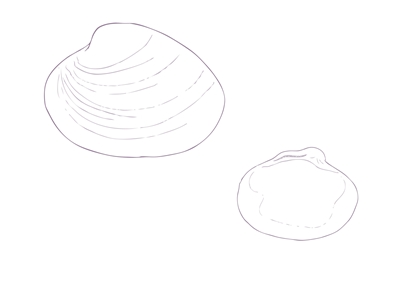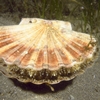General Description
Shells of this species are small, wedge shaped (cuneate), quite solid and chalky. Valve rounded apex (umbo) in posterior third of shell. Exterior covered with light brown coating (periostracum), may be darker in posterior area. Exterior sculpture of numerous fine concentric lines (striae). Right valve with single strong tooth, ligament internal. Shell up to 6 mm across.
Biology
This species can occur in large numbers. Like other species in this family group of bivalves, these tiny animals often have a commensal relationship with invertebrates including other bivalves, crustaceans, echinoderms and worms.
Habitat
On sand banks and in muddy areas in protected bays.
Soft substrates
Distribution guide
Southern Australia.
Species Group
Sea snails and shells › Bivalves
Depth
Water Column
Max Size
6 mm
Diet
Organic matter
Commercial Species
No
Species Code
MoV 889
Conservation Status
- DSE Advisory List : Not listed
- EPBC Act 1999 : Not listed
- IUCN Red List : Not listed





